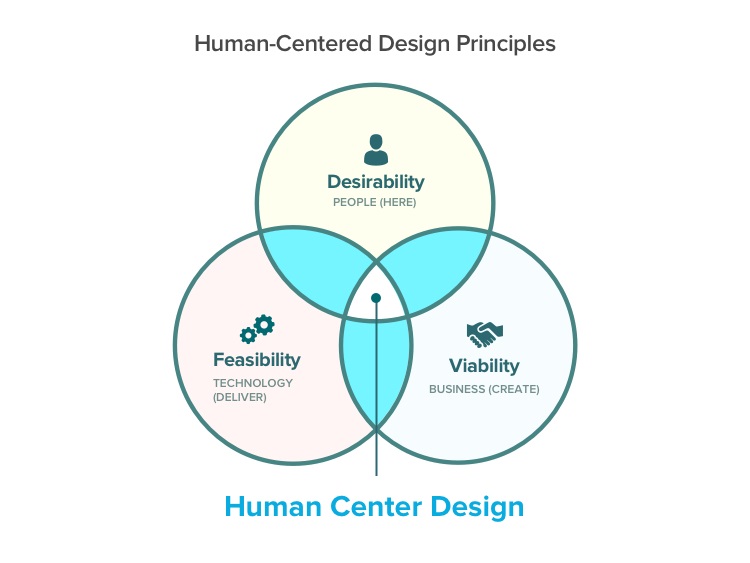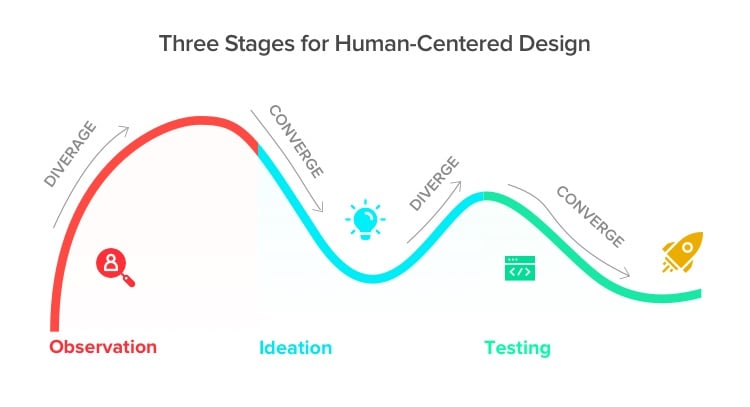A human centric approach to business is essential. Human-centered design is a process that puts the users, customers, and other people you’re serving at the center of your innovation, design, and execution processes. This blog post tells you how to apply this approach to your business and its benefits.
Human Centric Approach To Business
A human centric approach is one that focuses on the needs and perspectives of human beings. It is based on the belief that humans are the most important consideration in any situation and that their needs should be given priority.
The constant emergence of new technologies, new business models, and new competitors makes it increasingly difficult for business leaders to devise effective strategies. Companies must continually optimize their financial, technological, and human resources to remain relevant.
As consumers’ expectations continue to rise, businesses have no choice but to raise their game. Consumers are now comparing your business to your direct competition and all other businesses they deal with. This shift in consumer perception has pushed companies to reevaluate their customer service strategies.
Building and maintaining customer trust in business has become increasingly important as consumers demand more transparency and honesty from companies.
These shifts are centered around people requiring a human-centric approach to address.
What is Human-Centered Design?
Design expert and product designer, Francesca, says:
User-friendly design involves considering the perspective of the user throughout the entire process. This ultimately leads to more effective and usable products.
The innovative toolkit, the “Human-Centered Design,” is designed by the global design firm “IDEO.”
The 150,000+ downloads of the HCD toolkit by designers and other professionals show how popular human-centered design is.
A human-centered approach is used when designing an experience. The point is to co-design a solution with those using it.
Human-centered design is a process in which we involve target users while we design solutions to make their lives better. This is essential to create products, services, and experiences that people will want to use.
The broader one’s understanding of the human experience, the better design we will have. – Steve Jobs
The Three Phases of Human-Centred Design
The principles of human-centered design are observation, ideation, and implementation. By understanding and implementing these, we can develop more user-friendly products.
Let’s jump right in.
1. Observation
The first step in the human-centered design process is to identify the challenges your new product will solve.
Who will be using this product? What are their goals? 2. Consider the environment and context in which your users will be using the product. 3. What aspirations do your users have?
Here’s how you can record your phone call.
Research what your customers like about your competition. What do they love about their solutions?
What unmet customer expectations does your competition have? What are they not doing that their customers want them to do?
Your idea doesn’t have to be a drawback of a competitor, but it’s important to do research in the observation (ideation) phase.
2. Ideation
The ideation phase is where you identify opportunities for improvement and develop high and low-fidelity solutions.
1. Start by scheduling a brainstorming session with your team members. 2. Then, encourage your members to think about the user experience and develop ideas for new products or services. 3. Finally, create low and high-fidelity mockups to present your ideas.
The primary focus should be on coming up with that one great idea through a collaborative effort.
Consider these brainstorming techniques when conducting your next idea generation meeting.
Encourage participation: Encouraging all team members to participate and contribute their ideas is a great way to get a fresh perspective on things. User-centered design is all about co-creating.
The co-creative process allows everyone on the team to feel involved and allows for more innovative and user-focused ideas.
The Gallery is where you post all of your ideas (problems and solutions, expectations, and competitors) on stickies and pin them on a corkboard.
Let everyone on your team wander around the room, contemplate the information you presented, and develop innovative ideas.
This stage of the sales process involves identifying a problem that only you can solve.
3. Testing
Now that you’ve completed your user research, it’s time to test your prototype.
Before launching, it is important to get feedback from your users. Ask things like, “Do the targeted users have a clear understanding of how to use this product?”, “Is this user satisfied with the results?” and “Does it solve their problem?”
Talking to real people can provide you with valuable feedback on your prototype. This can help you iterate on your design before launch.
The ultimate goal is to: test, analyze, and improve until you hit your stride.
Human-Centric Approach in Action
A toothbrush designed for children still in use today is a great example of human-centered design. Oral-B asked IDEO in the mid-nineties to create a new toothbrush for children. Ideo decided not to replicate the existing toothbrush but instead created a smaller, more compact version that was less bulky than the market. They also watched children brush their teeth.
They discovered that children had difficulty holding the toothbrushes with a skinnier texture than their parents because they didn’t have the same motor skills or dexterity. Children needed toothbrushes that had a large, fat, squishy grip to make it easier for them.
“Now, every toothbrush company in this world makes these,” said IDEO Partner Tom Kelley in an address. “But our client reports, after we made that tiny, small discovery out in field–sitting down in a bathroom and watching a five year old boy brush his teeth-they had the best-selling toothbrush for children in the world for 18 mois.”
Talking to real people and testing with user testing tools can provide you with valuable feedback on your prototype. This can help you iterate on your design before launch.
Conclusion
By implementing a human centric approach, you can ensure your products stand out from your competitors.
Request a Data License and Access the World's People + Company Data
Want 300 million+ profiles at your fingertips? Updated monthly with the data on your own server/host!
Including personal emails, business emails, mobile numbers, mailing addresses and more.
You get net worth, ages, company data, and more.
Use it for cold outreach, paid ad campaigns, direct mail, social selling or even cold calling.
Use it with unlimited access for your own app, outreach campaigns, or as a client service.
Oh, and did I mention we can identify individuals visiting your, or your client's, website?
Contact us for how you can access the entire dataset, on your own server. No more API limits, no price per contact.
Want to help contribute to future articles? Have data-backed and tactical advice to share? I’d love to hear from you!
We have over 60,000 monthly readers that would love to see it! Contact us and let's discuss your ideas!


